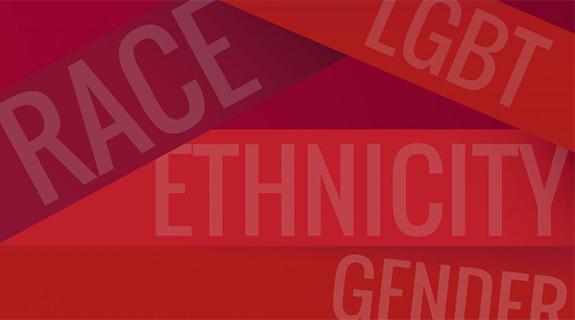When it comes to the much-discussed topic of diversity in Hollywood, a new University of Southern California study shows “the landscape of media content is still largely whitewashed,” but television offers a silver lining, especially compared to the film industry.
“Everyone in film is failing, all of the companies investigated,” Stacy L. Smith, a USC professor and one of three authors of the study, said in an Associated Press interview. “They’re impervious to change. But there are pockets of promise in television. There is a focus that change is possible.”
The Annenberg School for Communication and Journalism study Inclusion or Invisibility? Comprehensive Annenberg Report on Diversity in Entertainment concluded that while “the film industry still functions as a straight, white, boy’s club,” the fact that the “television/digital series are more balanced” offers hope for the future.
The report looked at 109 films released by major studios in 2014 and 305 scripted, first-run TV and digital series across 31 networks and streaming services that aired from September 2014 to August 2015. Researchers analyzed the gender, racial and ethnic representation and LGBT status of about 11,000 speaking characters, 10,000 directors, writers and show creators, and 1,500 executives.
Big-picture results point to the underrepresentation of women and ethnic groups in film and television. The number of shows missing Asian or black female characters entirely was deemed “particularly problematic.” The data determined “women are not represented in positions of senior leadership in equal numbers to their male counterparts,” and “only 2% of all speaking characters across the 414 movies, television shows, and digital series evaluated were coded LGB.”
The study also shows “female characters were more likely to be shown scantily clad and partially naked in broadcast, cable, and streaming content than female characters in films.”
“Overall, the landscape of media content is still largely whitewashed,” according to the report. “The hashtag #OscarsSoWhite should be changed to #HollywoodSoWhite, as our findings show that an epidemic of invisibility runs throughout popular storytelling.”
The study uses an “inclusion index” that ranks data such as “percent of underrepresented character inclusion,” and “percent of female directors” to create diversity scorecards across film, television and digital media.
What TV, Digital is Doing Right
Film distribution companies ranged from 0 - 20 percent on the diversity scale, while television and digital distributors fared much better, with Disney, The CW, Amazon and Hulu all scoring 65 percent and above.
“While companies failed on their film scores, the television/digital scorecard paints an entirely different picture,” the study says. “Although these overall grades reveal that there is still room for improvement across these indicators, there are a few very bright spots.”

The Walt Disney Company and The CW Network get the gold, with a score of 70 percent for inclusion in television and digital media. Disney succeeds in representing women and underrepresented characters on screen. Both companies strive for balance behind the camera with a greater share of women in writing and show creator roles, which correlates to more females appearing on screen.
For instance, creators such as Lizzy Weiss (Switched at Birth), Susanna Fogel and Joni Lefkowitz (Chasing Life), Jennie Snyder Urman (Jane the Virgin), and Leila Gerstein (Hart of Dixie) may be one reason these networks feature more girls and women, according to the study.
Other notable show creators include Shonda Rhimes (Grey’s Anatomy), Kenya Barris (Blackish), and Nahnatchka Khan (Fresh Off the Boat) on ABC, which likely contribute to the percentage of characters from underrepresented racial/ethnic groups at Disney.
Amazon also performed strongly on the female front. Amazon was rated “fully inclusive” for hiring women directors like Jill Soloway, creator and director on Transparent, and the animated series Wishenpoof! hired a female director across multiple episodes.
Hulu was rated “largely Inclusive” of female writers and “fully inclusive” of underrepresented characters. Viacom as well earned high marks for inclusion of female and underrepresented characters, and the report highlighted shows across networks in the Viacom family that feature women (Another Period, Barely Famous, Finding Carter, Review) and people of color (Bella and the Bulldogs, Broad City, Instant Mom, Soul Man) prominently across their programming.
“Clearly these streaming services understand the diversity of their audiences,” the study says.
On the other hand, Time Warner, 21st Century Fox, and CBS all clocked in with diversity rating scores of 25 percent or below.
“Across these companies, it is clear that while a single salient example of an inclusive series (Girls, Empire) is important, it may create a misperception that representation is better than the data reveal,” the study says. “For these companies, inclusivity must be implemented across all properties as series and programs are developed, cast, and aired.”
This study suggests using this data to create a clear picture of where the entertainment industry is succeeding and failing in terms of diversity, and provides insight as to which organizations need improvement. The report includes recommendations for creating inclusion goals, creating a system of checks and balances, monitoring progress, and other steps that media companies can take to become more diverse.
“To achieve inclusion, companies need to embrace new approaches,” the study says. “These strategies must involve more than simply “checking a box” when casting a film, series, or episode, or go beyond making a “diversity hire” behind the camera or in the executive suite.”
Related Stories
Tags:













































__twocolumncontent.jpg)











